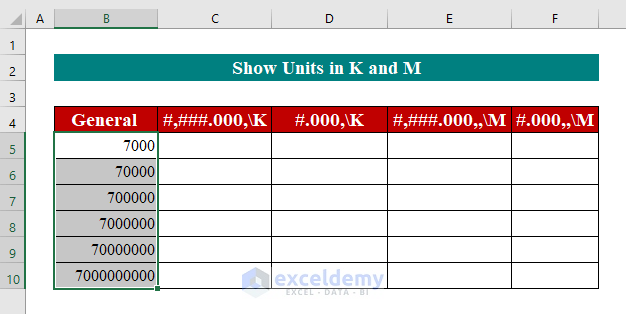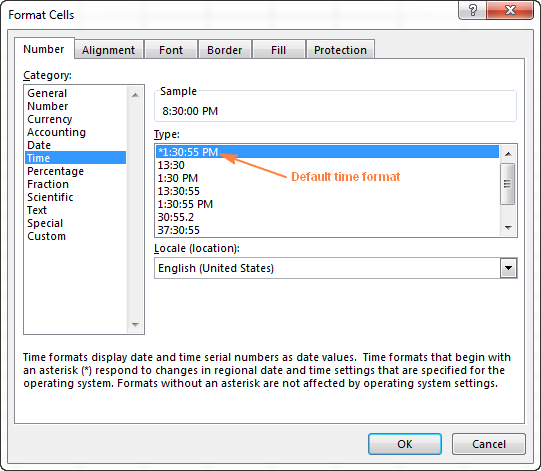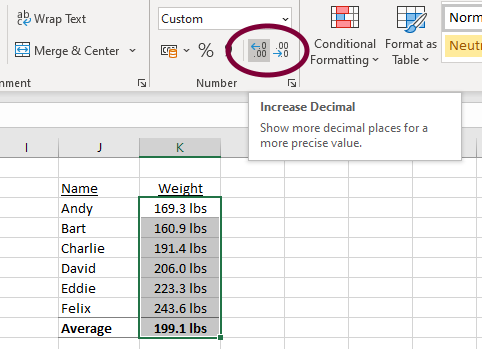

Note: custom formats are stored in the active workbook, like our Facebook page to find out how to store custom formats globally and other useful tips, coming soon. To use the format again, highlight the cells and go back to custom formats, your new format will be shown at the bottom of the list. If you then enter 100 in that cell, it will appear as 100kg, but you can still use it for computations. If you don't have time to watch the vid, it's as simple as.įormat > Cells > Number > Custom and choose General then type in "kg" Watch a short video on how to recreate the above example. So how do we get around this problem? With custom formatting.

Choose 0 in the list of Type (or enter it directly) which represents the values, and type the unit you want after it. Select Custom as the Category in Number tab. Or you can directly press Ctrl+1 to evoke Format Cells. Right-click the selected area and choose Format Cells in the menu. We do this of course when we are referring to monetary values such as $ but what about when it's something else, like degrees or cm or kg? If you've ever tried typing the unit of measurement directly into a cell alongside the value and tried to use AutoSum to total, you'll soon find that Excel doesn't play ball. First, select the cells that you want to add units. Caution! Just like any other formula, you will need to pay attention to your absolute and relative cell values so that your conditional formatting rules are applied correctly.Sometimes in Excel it's useful to be able to show a format automatically inside a cell when you input data. Now the unit is added to each cell of the column. In the popped out Format Cells dialog, click Number tab and select Custom from the Category list, and then in the Type text box, enter 0'' into it. This means you can copy/paste the rule (along with its contents!) and even use the copy handle to drag and copy the rule. Select the data list, then right click to select Format Cells from the context menu. Once a conditional formatting rule has been applied to a cell, the rule will also apply to any cell that is copied from the original. When the Applies to field reflects the correct new range, click OK.
CUSTOM FORMATTING EXCEL ADDING UNIT DOWNLOAD
To follow using our example, download 03-Conditional Formatting Across Multiple Cells.xls In Our example, we want the cell to change to red background and red text when the cell value is less than 20.

Select Highlight Cells Rules, then choose the rule that applies to your needs.Highlight the cell in the row that indicates inventory, our “Units in Stock” column.

Here’s how to use conditional formatting to show us that an item in our store is getting low on inventory and we will need to re-order soon: Often, you will use conditional formatting to call attention to cells that represent an outlying condition – such as too many days until delivery or too few items in inventory. Images were taken using Excel 2016.Ĭonditional formatting is a useful Excel feature that can help you quickly scan your data without resorting to complicated filtering or fussy charts. Steps in this article will apply to Excel 2007-2016. By Tepring Crocker Categories: Conditional Formatting, Excel® Tags: Conditional formatting multiple cells


 0 kommentar(er)
0 kommentar(er)
